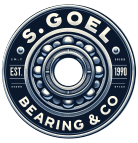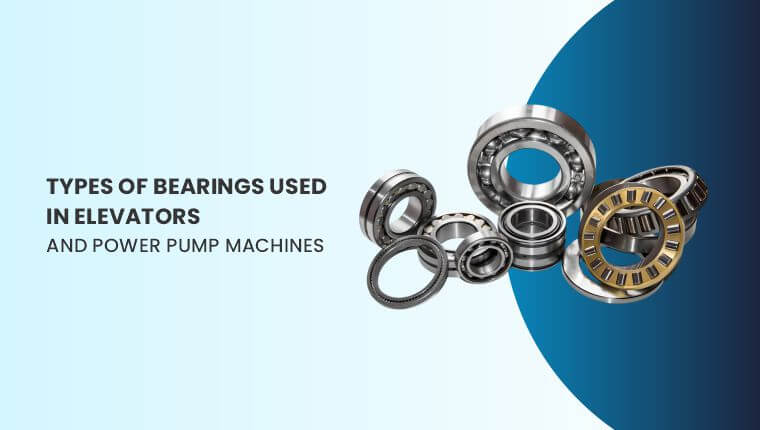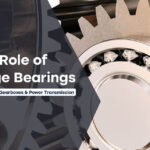Bearings are essential for mechanical systems such as elevators and power pump machines. These machines depend on the best and most durable bearings that can make them run with minimal breakage and wear and tear on the machines to enhance their durability. In this blog, the various types of bearings used in these systems, their roles, and their importance to the elevator and power pump machines will be discussed in detail.
Understanding Bearings in Mechanical Systems
Bearings are a mechanical component predominantly utilized to support the shaft, any other moving part, or any part that revolves or turns. In mechanical structures, bearings help shafts, wheels, or other rotary parts in rotation, ensuring they do not wear out quickly. In systems with multiple subsystems, such as elevators and power pumps, the performance bearings used are responsible for the system’s performance.
Some types of bearings are designed for specific loads they support, environmental conditions, and the components’ rotation rate. Look at the bearings most commonly used in elevators and power pump machines.
Types of Bearings in Elevators
1. Ball Bearings
Ball bearings are widely preferred among all elevator bearings since they are relatively cheaper and easy to manufacture. These bearings comprise a surrounding and an inner track; they contain spherical balls that rotate around them.
Ball bearings are designed to support radial and axial loads and, therefore, fit well into elevator systems that experience both forms of loads. The main advantages of ball bearings in elevators include:
Smooth Operation: A ball bearing is vital to facilitate the low frictional forces required in the elevator’s mechanical movement.
Durability: Superior ball bearings enable the ball bearing to cope with high usage levels, leading to better durability of the elevator system.
2. Roller Bearings
Roller bearings, as the name suggests, utilize cylinder rollers as they help in decreasing the force of friction between the rolling parts. These bearings can support more loads than ball bearings and are usually fitted in circumstances requiring high loads.
Roller bearings find their application in the elevator where the load-supporting capacity requirement is high, such as drive sheaves and traction systems.
Higher Load Capacity: A roller bearing is designed to carry higher radial loads in bearing than a ball bearing.
Stability: It has more comprehensive support when it is fully loaded, and thus, it is more appropriate for other large elevator applications.
3. Thrust Ball Bearings
Thrust ball bearings are intended to take axial loads that act in parallel with the shaft’s axis of rotation. Especially for those elevator parts that are subjected to axial loads, like the drive motor, elevator drum, pulleys, etc., thrust bearings are used.
Axial Load Support: Thrust bearings are effectively designed to address the axile load experienced on the elevator’s drive system.
High Reliability: Even in heavy-duty elevator applications, where high axial stress is common, they guarantee little wear and tear.
4. Magnetic Bearings
Magnetic bearings support the rotating shaft with the magnetic field; there is no direct physical interaction between the bearing and the shaft. This advanced technology has roughness close to zero and is best suited for applications that may cause noise and wear. Magnetic bearings are applied in elevator systems as premium, energy-saving systems, particularly in high-speed applications.
Frictionless Operation: Magnetic bearings provide lower friction which leads to longer system life and often have very low levels of maintenance.
Energy Efficiency: Due to low levels of contact, magnetic bearings help reduce energy consumption in an elevator system.
Types of Bearings in Power Pump Machines
1. Ball Bearings
Like elevator motors, ball bearings frequently find applications in power pump machines. They are particularly suitable for pumps that apply forces in both radial and axial directions.
Versatility: They are available to suit a variety of pumps, from those that may be installed in a household to pump water in a garden to those installed in industrial premises.
Ease of Maintenance: Ball bearings do not wear out easily; when they do, they are quite easy to replace.
2. Cylindrical Roller Bearings
Cylindrical roller bearings are particularly suitable for power pumps bearing heavy raw loads. Compared to ball bearings, these bearings use cylindrical rollers to give more uniform load support, making these bearings ideal for high-capacity pumps.
High Load Capacity: Cylindrical roller bearings are for applications with larger loads and, therefore, are valid for industrial uses such as pump machines.
Enhanced Durability: This distribution helps to minimize the load on a particular roller and thus increases the time when the roller will be most effective.
3. Tapered Roller Bearings
Tapered roller bearings are suitable for carrying both radial and axial loads and, therefore, ideal for applications that involve both forces. In power pump machines, the applications of the tapered roller bearings to support the shaft are both radial and axial.
Optimized Load Distribution: This narrower style provides more uniform load-bearing and is particularly important where high pressure is used, such as in pumps.
Resistance to Wear: Tapered roller bearings are manufactured for high loads and high-speed applications typical to industrial pumps.
4. Thrust Bearings
Thrust bearings help support axial loads in pump machines. Power pumps are utilized to bear the thrust forces that happen in the axis of rotation, such as in centrifugal pumps.
Axial Load Management: Thrust bearings help stabilize the pump’s operation shaft during its function so that it does not shake or move in the axial direction.
High-Load Handling: Thrust bearings can handle big axial loads and are very useful in most pump drives.
The Bottom Line
The type of bearings used in elevators and power pump machines plays a crucial role in enhancing system performance by reducing friction and extending the overall lifespan of the equipment. Each bearing type offers unique advantages and is tailored for specific applications. They are designed to carry various loads, address misalignment, and minimize the effects of friction effectively.
Whether it’s motor bearings for elevators or cylindrical roller bearings for power pumps, selecting the right bearing significantly impacts system performance. Proper bearing choices optimize functionality, reduce downtime, and increase service life and efficiency, benefiting operators and customers alike.
If you are looking for the best-bearing importer and distributor, contact S Goel Bearings & Co. today!




